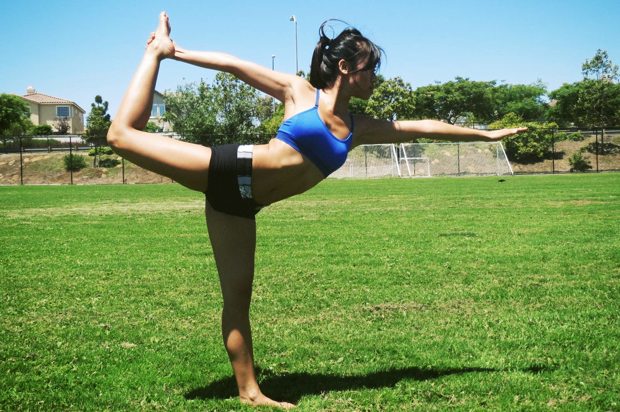This past week I’ve been teaching a Shiva-inspired flow that culminates in one of my favorite depictions of him in Natarajasana, or Lord of the Dance Pose. Shiva, in his role as the Destroyer, is the one in the Hindu trinity who cleans up after the party (likely he’s the one that started the party, too), so that Brahma, as the Creator, can come in to rebuild. As menacing as the name Destroyer might sound, it’s really not.
Shiva’s aim is to clear away the avidya, or ignorance and delusion, in one’s life, so that truth can be better perceived. This is often likened to the ongoing cycle of rebirth and destruction, a cycle we can see in the unfolding of the seasons, for example, and in our own lives when things begin and end, rise and fall. Shiva reminds us that there is a fundamental and necessary wiping of the slate for the phases in one’s life so that we can start over and gain perspective; each time the slate gets wiped, the hope is that you’re just a bit wiser with your chalk the next time.
Dancer Pose offers a perfect opportunity to embody this process. Like many standing balance poses it could be a frustrating struggle or it could be a blissful opening. That part is up to the yogi, and one I see played out in a myriad of ways in my classes. The pose demands a mixture of balance, flexibility, strength, poise, and a heck of a lot of patience. That can be quite the heady yoga cocktail, but it is well worth the effort. To cultivate an experience that is more akin to bliss, here are some quick things to invoke your inner kick ass dancer.
Please note: These tips are aimed for the more common variation of Dancer, where you reach one hand behind for the lifted back foot as your other arm extends up by the ear.
1. Start From The Ground Up
As the King Dancer, Shiva is often depicted as balancing one foot on top of a rather unique platform, a tiny dwarf. The dwarf represents ignorance and delusion and Shiva is a master over these qualities. Thankfully we don’t have to stand on a dwarf, but it does help to distribute your weight throughout all four corners of your standing foot to cultivate your balance. Spread the toes in your standing foot and take up as much real estate as you can. You can even slightly bend your standing leg to enhance that grounded, stable feeling, and as you feel more comfortable, you can start to firm the standing leg toward straight.
2. Be Firm In Your Grounding, But Light On Your Feet
As we work up from the stability of your standing foot, it helps to remind ourselves that the aim in this pose is not to become a rigid balance pole that could be knocked down by a mere push, but rather we become a force that can adapt and maintain his or her cool throughout any shifts, i.e. life’s ups and downs. Think of all the graceful dancers you see. They are often moving from a place of deep awareness, yet they are open to shifting anytime circumstances on the dance floor change. In this pose, when you firm the muscles of your standing leg, don’t lock your knees, as that will not only ditch the dancer-like freedom and adaptability you’re trying to cultivate, but it will make it less likely that you can maintain your balance over a longer period, too.
3. Of course, We Can’t Forget Those Hips
Now that your standing leg is stable and adaptable, the alignment of your hips can further empower your pose. Similar to the actions you cultivate in Virabhadrasana I (Warrior 1) and Crescent/High Lunge, in Dancer, attempt to level the hips and internally rotate the lifted back leg to hug in towards your mid-line. At the same time, gently tone the lower abdominals as you lengthen your tailbone downward to avoid any compression in the lower back. These adjustments will also invite more of a squaring of the hips, and all these actions can help reduce erratic wobbling.
4. Make Some Space For Your Heart To Shine Up
It’s not wrong when we see people drop their chest forward and down to help lift the back leg up in some variations of Dancer. However, remember that this pose is also a backbend as well as a standing balance.
When the torso drops forward, similar to Virabhadrasana III (Warrior 3), you don’t necessarily celebrate the ecstatic heart-opening that reminds us that Shiva’s destruction is coming from a place of compassion; he is clearing out life’s gunk that shields the truth and power in our hearts. When you’ve cultivated the stability in the hips and legs, enjoy some freedom in your upper half from the chest all the way up to your head and arms. See if you can release any tightness in the shoulders and neck by taking expansive breaths that fill up the lungs, expand the feeling of space around your rib cage and lift your chest. You may notice your torso lifts much like a hot air balloon. This can also encourage the bound back leg to lift upwards as well.
Here’s to rocking out your next Lord of the Dance pose, and remember once you’ve taken the time to cultivate and dance to your own rhythm, you can bet your truth will shine through!


